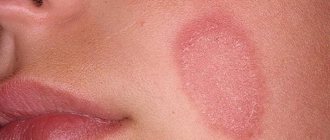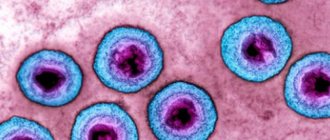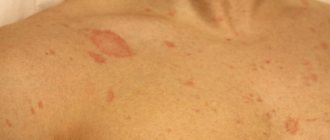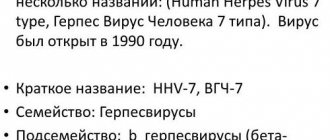Chickenpox is a common disease. As a rule, it affects children of preschool and school age, who spend most of their time in children's groups.
If there is at least one sick person in a group or class, with a 90% probability, after a while the disease will be detected in the rest of the children. Many parents are interested in how contagious is chickenpox after a rash in children? After all, during the period of illness, the little ones are prohibited from coming into contact with other children, walking on playgrounds, or visiting public places. It is this issue that we will try to understand today.
The emergence of contagiousness
In fact, at the initial stage, chickenpox is not dangerous. After direct infection, the virus goes through an incubation stage, establishes itself and multiplies in the body through the use of the cellular system for producing protein material. This stage is accompanied by infectious processes occurring in local areas of epidermal cells and mucous tissues, and has no external manifestations.
At the end of the incubation stage, when the virus spreads throughout the body, causing infectious poisoning (intoxication), the carrier of the infection becomes contagious and poses a threat of infecting healthy people. At this time, in the carrier of the infection, a large amount of virus appears in the saliva and mucus secreted by the mucous tissues of the mouth, nose and throat, and when sneezing, yawning, coughing and talking, the causative agent of the disease, enclosed in the smallest particles of the above-mentioned liquid, is released in a free environment.
Getting onto the mucous membranes of a healthy person during the respiratory process, in the fluid secreted by a sick individual with chickenpox, the virus repeats the next development process and provokes the disease.
The entire incubation period ranges from 10 to 21 days, on average 14-18 days in adults and 10-14 in children, provided that the body’s natural defense system is functioning normally. This indicates that an individual with chickenpox becomes infectious 8-16 days after the virus enters the body and 1-2 days before the first symptomatic manifestations appear.
How many days is a person contagious with chickenpox? Let's look at this issue next.
Chickenpox in adults: signs of the disease
As the infection develops and the virus damages the body, the patient begins to complain of deterioration in health, poor sleep, and unnaturally rapid fatigue. Literally a day before the rash appears, the patient’s condition can sharply worsen: body temperature rises (often up to 40 degrees), sweating increases, and chills appear.
As is already known, the first signs of infection are characteristic skin rashes accompanied by itching. The herpes virus infects epithelial cells and mucous membranes, resulting in swelling and a red-pink rash. These symptoms mean that the incubation period is over and chickenpox in adults requires urgent treatment.
The standard symptoms of chickenpox include the following:
- increased body temperature (38-40 degrees);
- headache turning into migraine;
- general weakness, malaise;
- pain syndrome localized in muscle tissue;
- feeling of nausea, vomiting;
- cramps, especially at night.
As the infection progresses, the rash also undergoes certain changes:
- in 99 percent of cases, chicken rash in adults spreads to the mucous membranes and genitals;
- every 7-10 days new rashes appear on the body;
- at the peak of the maximum amount of rash, body temperature can reach 40 degrees;
- A rash in an adult patient is most often susceptible to the development of a purulent process; for this reason, the elements may not heal for a long period. In more severe cases, tissue necrosis may develop.
Contagiousness of chickenpox throughout the entire period of the disease
From the moment the threat of infection appears, caused by a large accumulation of the chickenpox pathogen in the saliva and mucus of the patient, and throughout the entire period of the disease, the person continues to be infectious. Why?
The fact is that when symptoms of infection appear, the degree of infectiousness increases due to an increase in the concentration of the virus in the fluid secreted by the patient. However, when a characteristic sign of the disease appears, an additional threat appears.
The rash, according to the stages of development, exhibits a polymorphic character and changes. The first elements of the rash - roseola, within 24 hours turn into papules - small nodules that form in the central part of the roseola, which within 48 hours transform into vesicles (vesicles filled with clear liquid). The liquid contained in the vesicles contains an even greater concentration of the infectious agent. The vesicles can burst, which leads to a massive release of the infectious pathogen into the air. In this case, there is also a possibility of infection if microscopic particles of the “bubble” liquid get onto the mucous tissues of a healthy person when breathing.
How long is a person contagious with chickenpox? As a rule, the appearance of the last foci of exanthema, on average, occurs 4-12 days after the appearance of the first elements of the rash, indicating a rapid recovery of the patient, but at this moment it is also contagious. We took the figure “4-12 days” from calculations, establishing the minimum period of rash in children (in childhood, the period of rash lasts 4-6 days), and the maximum period of rash in adults (in adult members of society, a rash can form within 7-12 days). Consequently, a person is contagious throughout the entire period of chickenpox rashes plus 1-3 days before them.
Folk remedies
Folk remedies that will speed up recovery can only be used as additional therapy to the main treatment. Using only the following recipes in the fight against chickenpox is not enough, and therefore they will not be able to replace the therapy prescribed by a doctor.
- A mixture of olive and bergamot essential oils. This composition can be used to lubricate rashes: it relieves inflammation and soothes itching.
- If rashes appear even on the oral mucosa, rinsing with a decoction of sage, chamomile, calendula and other medicinal herbs that have antiseptic and anti-inflammatory properties is recommended.
- For general health, you need to make an infusion of parsley leaves and stems. Pour boiling water over a tablespoon of herbal mixture, let stand for a quarter of an hour, drain and cool. Take 50 grams 4 times a day.
Thus, the use of medicines and herbs will lead to easier transfer of acute conditions and faster recovery. Herbs will relieve inflammation, and medications will normalize the general condition.
How many days does it take for a person to become non-infectious?
The latest rashes on a person’s skin indicate a decrease in the aggressiveness of the infection, but this cannot be called a complete recovery. Moreover, humans also pose a risk of infection during this period of time.
How many days after chickenpox is a person contagious? For 5-6 days, after the appearance of the last foci of chickenpox exanthema, the person continues to be contagious. After the period of time indicated above, an individual who has had chickenpox is no longer dangerous and can fully communicate with other people.
Symptoms of the disease
It happens that parents begin to treat their child for a common ARVI, not suspecting that they are faced with chickenpox. Incorrect treatment can cause possible complications and to avoid this, it is necessary to correctly diagnose the disease. Symptoms of chickenpox may include the following:
- a red rash appears on the patient’s skin;
- the resulting papules are constantly and very itchy;
- a patient with chickenpox experiences an increase in temperature to 37 degrees;
- the patient feels general malaise: weakness, fatigue;
- lymph nodes in the neck area enlarge.
Of course, you shouldn’t diagnose chickenpox on your own at home and it’s best to consult a specialist. At the same time, these symptoms will help avoid improper treatment and possible complications. It is noteworthy that the symptoms of chickenpox are similar to the first signs of measles, so you should be very careful before giving your child any medications.
Additional indicators that allow diagnosing chickenpox are symptoms of severe intoxication, namely:
- headache;
- nausea;
- loss of appetite;
- aching in bones and joints.
However, the main symptom of chickenpox continues to be the appearance of a profuse red rash throughout the patient’s body. After some time, the rashes take the form of papules up to 2 mm in diameter and are filled with clear liquid. If you take the right measures to treat the virus in a timely manner, then after 5-6 days the rash will subside and pigment spots will remain in its place, which will also gradually disappear without additional treatment.
In some cases, the chickenpox virus can be complicated by the development of conjunctivitis, stomatitis, and sometimes a gangrenous form of the disease. In the latter case, the papules become inflamed and blood poisoning begins.
Summing up
After studying this issue, you can make a short information list:
- A patient with chickenpox is contagious before the onset of infectious manifestations, 24-72 hours before them;
- A patient with chickenpox is contagious throughout the course of the disease;
- A patient with chickenpox is contagious after the last elements of the rash appear for 5-6 days;
Based on the above data, we can derive an average figure, which will include the minimum and maximum duration of the contagious period of infection.
How many days is a person with chickenpox contagious? The contagiousness of chickenpox, on average, can be observed from 10 to 21 days.
How many days is a person contagious with chickenpox in adults? The infectiousness of the infection in adults can be observed from 13 to 21 days.
These numbers may change up or down under different circumstances. For example, for children the minimum number may be lower.
Let us add that chickenpox can have very mild external manifestations and, therefore, a mild infection. Under this condition, the degree of contagiousness will be significantly less, and the time period during which the likelihood of infection exists will also decrease. And vice versa. Chickenpox can have serious viral complications, which significantly increases the risk and duration of infection.
Chickenpox, like other viral diseases, is difficult to make specific calculations, since these figures largely depend on the characteristics of the immune system. For example, in people with suppressed immunity or immunodeficiency, as well as in babies under 1 year of age, the above figures will be completely irrelevant.
Intentional contamination - harmful or beneficial
Many parents deliberately try to infect their children during childhood, since the disease in this case is easier. They feel well and may not suffer from fever or nausea. Some symptoms are completely absent.
But there is also a downside. Chickenpox, whatever it is, is stress for the body. You should not expose a child under three years of age to infection. The disease can negatively affect its development.
It is important that the baby gets sick in the right way. Choose the period of infection wisely, and it is necessary that during this time he does not have other diseases.
A method to avoid infection
In fact, you can only become infected with chickenpox from a sick person, by direct contact with him or by being nearby. There is also a minimal risk of catching the infection during a fleeting meeting with a patient with chickenpox or simply sitting at home, since the virus is able to penetrate through open windows, ventilation, etc. Therefore, in order to protect yourself from this disease, it is necessary to avoid contact with infected people who have obvious signs of the disease. It seems that everything is simple, but...
You can become infected from a person suffering from herpes zoster (a secondary manifestation of the chickenpox virus), which manifests itself in the form of unilateral herpes-like rashes on the body, which is often not possible to notice. And as we found out above, chickenpox is contagious even before the appearance of symptoms and characteristic exanthema. So how can you protect yourself from infection?
Today, in medical practice, preventive vaccination against chickenpox is widely used, using a live vaccine containing a weakened strain of VZV Oka (Varicella zoster virus). When this vaccine is administered to a healthy person, an immune response is provoked, including the production of specific antibodies that bind or neutralize the infectious agent. This method, after completing the full course of vaccination (for children - 1 dose, for adults - 2), allows you to develop stable immunity against this infection, which will function for 10 years, and after revaccination - for life. In addition, the introduction of a live vaccine eliminates the possibility of developing herpes zoster.
By the way, you can become infected with chickenpox from people who have recently undergone a course of preventive vaccination.
Do not be ill.
Vaccination
Chickenpox vaccines have been developed to help fight this virus. The most common are Okavax, made in Japan, and Varilix, made in Belgium.
Vaccination is not mandatory, but is recommended primarily for women who have not had chickenpox and are planning pregnancy. Vaccination is advisable for weakened people who are in large groups (army). Vaccination is possible for adults and children after one year.
Within 72-96 hours from the moment of contact of a healthy person who has never been sick with a sick person, an emergency vaccination against chickenpox is carried out. Only under this condition does it give positive contact.
The effect of the vaccine begins immediately after vaccination; antibodies are produced quickly within 1.5 months. The effect remains for life.
It is important! Even if vaccinated, a person may remain a source of infection for some time. Don't be afraid of chickenpox. It usually goes away without complications or consequences. But you shouldn’t neglect preventive and safety measures. At the first signs of illness, you should definitely consult a doctor.
Who said that curing herpes is difficult?
- Do you suffer from itching and burning in the areas of the rash?
- The sight of blisters does not at all add to your self-confidence...
- And it’s somehow embarrassing, especially if you suffer from genital herpes...
- And for some reason, ointments and medications recommended by doctors are not effective in your case...
- In addition, constant relapses have already become a part of your life...
- And now you are ready to take advantage of any opportunity that will help you get rid of herpes!
There is an effective remedy for herpes. Follow the link and find out how Elena Makarenko cured herself of genital herpes in 3 days!
- Herpes will go away in 10 days if you drink it every morning... read more >>
- The most reliable way to treat herpes! read more >>
- This PRICEY remedy cures herpes in a week... read more >>
Is it possible to prevent chickenpox after contact with a sick person?
If you are faced with a patient with chickenpox, then the main thing to do is prevention and vaccination. It’s just not a fact that the disease will not manifest itself. There is a possibility that it will occur in a lighter form.
You can turn to antiviral drugs:
- Arbidol.
- Viferon.
- Acyclovir.
- Vitamin C.
The risk of infection will be reduced, and if the disease does appear, there will be fewer rashes.
If a child in your family becomes infected, you need to take action immediately. Give someone infected with chickenpox a separate room, linen, and cutlery.
Important! For greater security, wear a gauze bandage.
If you have had rubella, can you get chickenpox?
Rubella belongs to the Togaviridae family of viruses. Women during pregnancy should not get rubella. The baby may be born with pathologies: vision, hearing, and the cardiovascular system may be affected.
If rubella infection occurs, doctors insist on terminating the pregnancy (60%). Over time, the likelihood of rubella affecting the fetus decreases significantly (7%).
But small children tolerate rubella normally.
It is important to know that chickenpox and rubella are completely different viruses. They have only some similarities:
- transmitted by airborne droplets;
- quickly die in the external environment;
- similar to the initial stage - small red rash;
- Children aged 2-8 years are most often affected by these diseases.
Otherwise, these diseases are completely different. The most pronounced differences are that in the case of rubella, the rash does not turn into blisters.
Important! From all this we can conclude that if you have had rubella, you can also get chickenpox. Be carefull!











